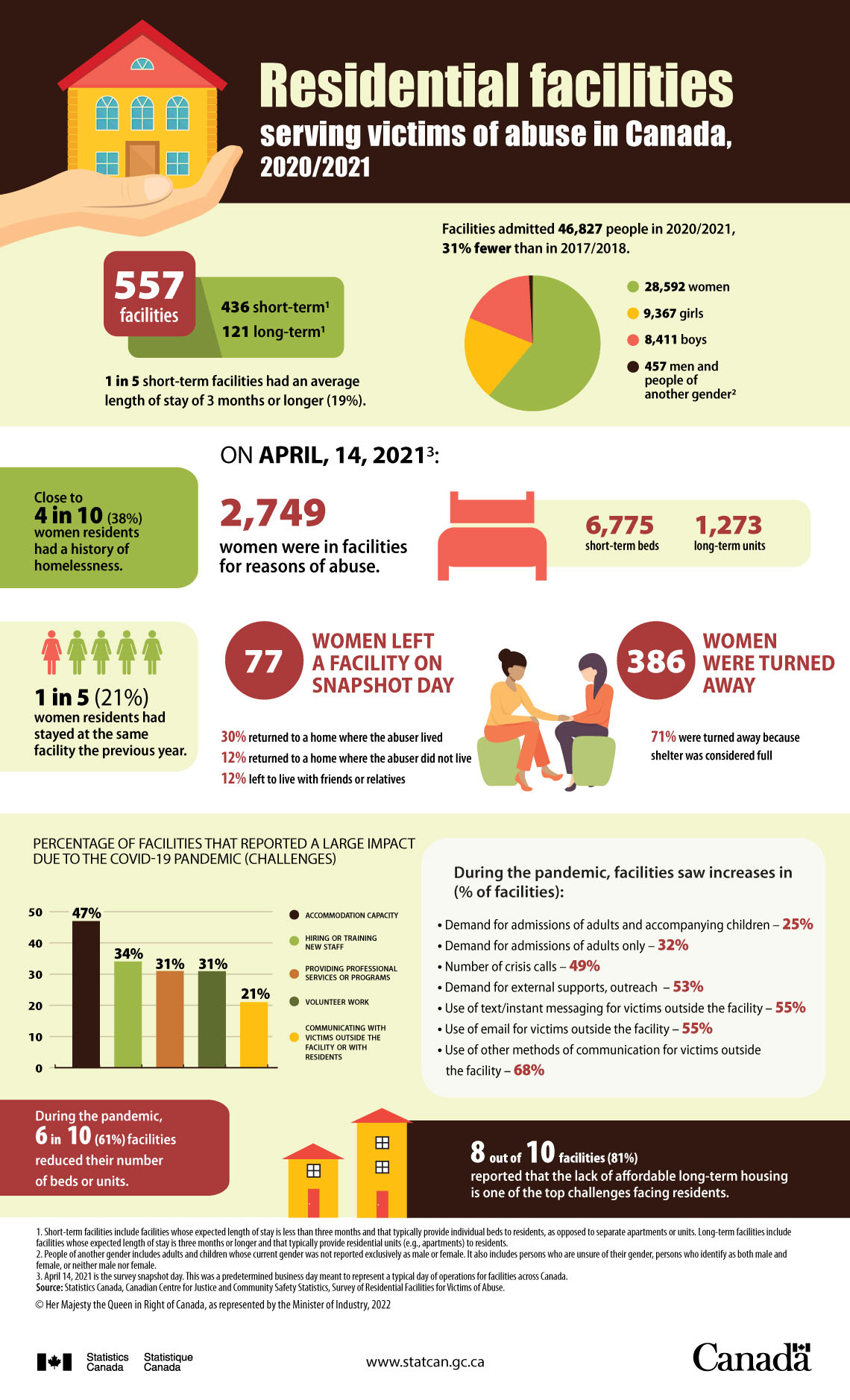Residential facilities serving victims of abuse in Canada, 2020/2021
Archived Content
Information identified as archived is provided for reference, research or recordkeeping purposes. It is not subject to the Government of Canada Web Standards and has not been altered or updated since it was archived. Please "contact us" to request a format other than those available.

Description: Residential facilities serving victims of abuse in Canada, 2020/2021
557 facilities
1 in 5 short-term facilities had an average length of stay of 3 months or longer (19%).
Facilities admitted 46,827 people in 2020/2021, 31% fewer than in 2017/2018.
- 28,592 women
- 9,367 girls
- 8,411 boys
- 457 men and people of another genderNote 2
On April 14, 2021 Note 3:
- 2,749 women were in facilities for reasons of abuse.
- 6,775 short-term beds
- 1,273 long-term units
Close to 4 in 10 (38%) women residents had a history of homelessness.
1 in 5 (21%) women residents had stayed at the same facility in the previous year.
77 women left a facility on snapshot day
- 30% returned to a home where the abuser lived
- 12% returned to a home where the abuser did not live
- 12% left to live with friends or relatives
386 women were turned away
- 71% were turned away because shelter was considered full
Percentage of facilities that reported a large impact due to the COVID-19 pandemic (challenges)
- Accommodation capacity (47%)
- Hiring or training new staff (34%)
- Providing professional services or programs (31%)
- Volunteer work (31%)
- Communicating with victims outside the facility or with residents (21%)
During the pandemic, facilities saw increases in (% of facilities):
- Demand for admissions of adults and accompanying children – 25%
- Demand for admissions of adults only – 32%
- Number of crisis calls – 49%
- Demand for external supports, outreach – 53%
- Use of text/instant messaging for victims outside the facility – 55%
- Use of email for victims outside the facility – 55%
- Use of other methods of communication for victims outside the facility – 68%
During the pandemic, 6 in 10 (61%) facilities reduced their number of beds or units.
8 out of 10 (81%) facilities reported that the lack of affordable long-term housing is one of the top challenges facing residents.
Source: Statistics Canada, Canadian Centre for Justice and Community Safety Statistics, Survey of Residential Facilities for Victims of Abuse.
- Date modified:
